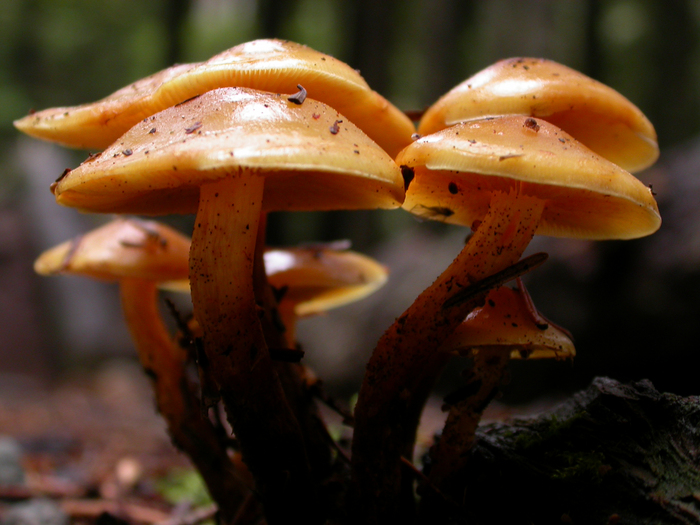
These little orange guys come up every year near, but not on, some fallen logs in the Denny Creek campground. Since they are not actually growing on dead wood, they are probably not Pholiotas, but I'm not sure what they are.

These little orange guys come up every year near, but not on, some fallen logs in the Denny Creek campground. Since they are not actually growing on dead wood, they are probably not Pholiotas, but I'm not sure what they are.
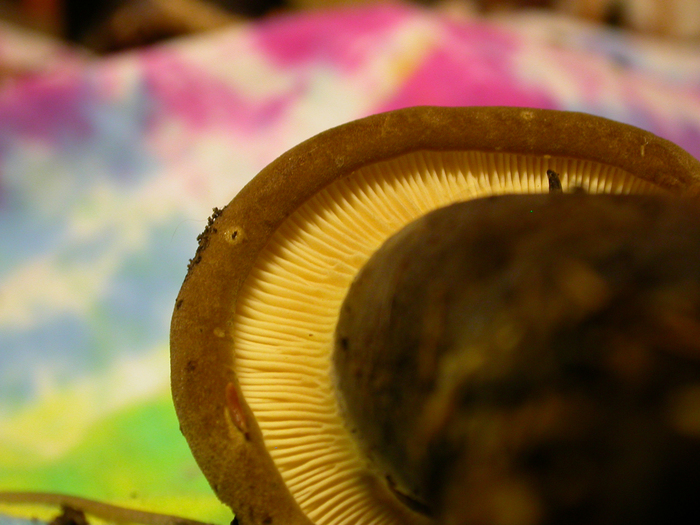
This is a nice shot of the inrolled margin of Paxillus involutus, so named because of its inrolled margin. This photo was taken on 9-15-04.
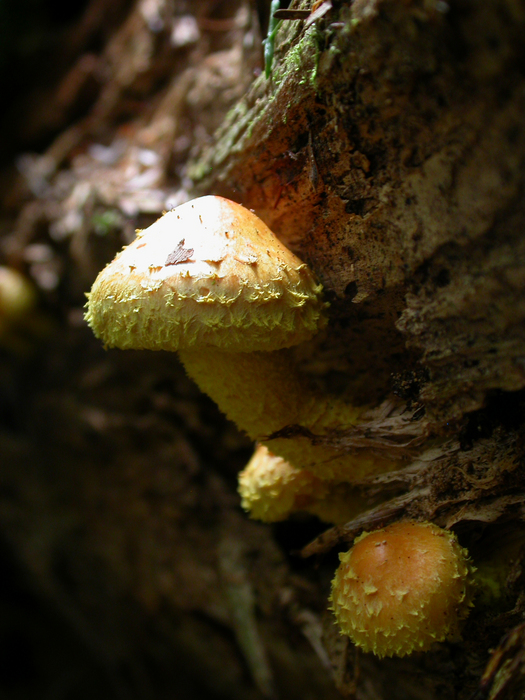
Here are some more Pholiotas, a little fuzzier than usual but otherwise pretty typical for the genus. This photo was taken on 9-1-04 and was actually at Asahel Curtis, rather than at Denny Creek proper.
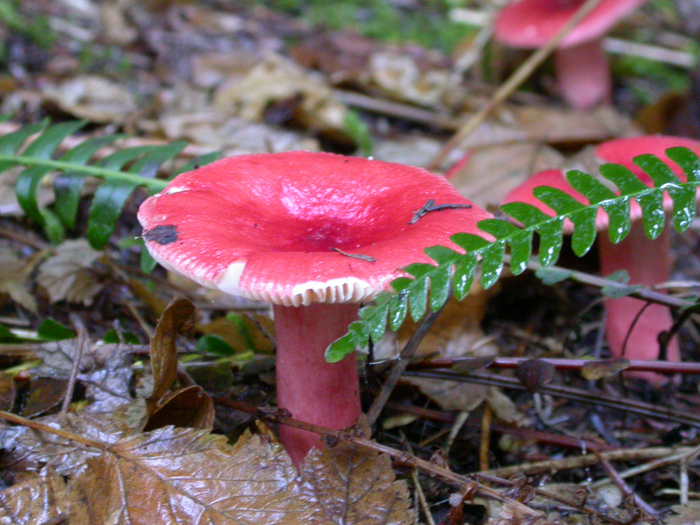
Russula is another genus that gives me endless fits. There is only one northwestern Russula species that is reported to be worth eating, and that is Russula xerampelina, the Shrimp Russula.
It is supposed to have a mildly fishy or shrimpy odor, which is supposed to be quite strong when the mushroom gets old. I have spent lots of time out in the woods sniffing Russulas, and somehow none of them smell at all fishy to me. Many of the large, colorful mushrooms you'll find growing on the forest floor are Russulas, and if they are bigger than a baseball and bright red or purple, then they are almost certainly Russulas. These were photographed on 10-24-05.

As noted with the Gypsy mushroom above, many mushroom hunters despise the genus Cortinarius with a passion usually reserved for slugs and maggots and other ugly creatures which devour mushrooms before we do. In fact, many hunters, the same ones who will spend hours contemplating pileus arrangement in Hygrocybe or pouring over arcane keys to confirm the identity of a Lepiota, will pick up a mushroom, note the rusty-brown spores and the delicately filamentous cortina which gives the genus its name, and then say Cort
with disgust while chucking the mushroom over their shoulder. Believe me, I've seen it!

These pretty little guys are a variety of stalked polypore. I haven't ever keyed them, so I don't know the species. Stalked polypores are unusual in that they look a lot like an ordinary mushroom. Most polypores are bracket fungi
that grow in big, woody shelf-like formations on trees. Like the Hericiums above, they cause heart rot.
These guys, though, are innocently growing on the ground (probably really on very old, decayed, buried wood) in very mushroom-shaped ways, hardly bracket or shelf-like at all. Other than that, though, they are typical polypores, with pores instead of gills, and a hard, woody texture. Polypores also are often striped with different shades of brown, and these are no exception, either. The photo is from 7-11-04 near Franklin Falls.
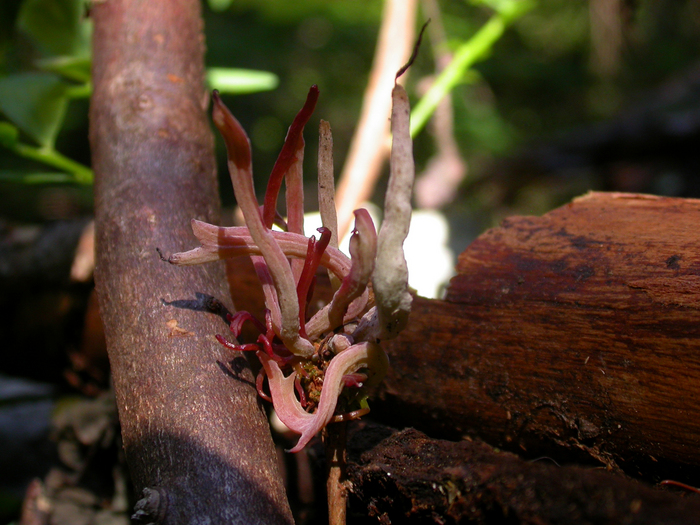
This is a strange little fungus that I found growing out of the end of a stick. I believe it is a Cordyceps species, a genus best known for infesting insects and sending mushrooms literally growing up out of the backs of ants and spiders, but I really don't know at all for certain. The shiny stalks look almost plant-like, but when breaking off bits (after taking pictures) it seemed fairly fungal. This strange little growth remains a mystery for me. The photo was taken on 9-1-04 on the Denny Creek trail.
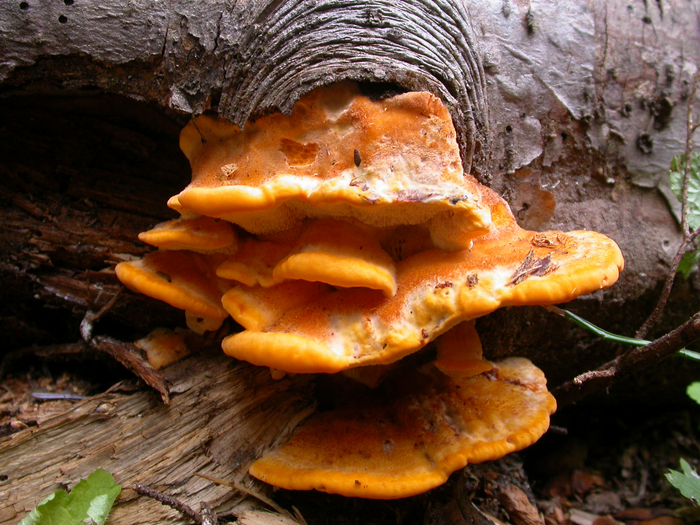
Another unusual polypore! This one is only strange in one way – it is actually tender enough to eat. This is Laetiporus sulphureus also known as the sulphur shelf or the Chicken of the Woods mushroom. Its flavor and texture does faintly resemble chicken, and it can be used as a chicken or turkey substitute for some recipes. The thick part of the fungus that is actually attached to the wood will be somewhat bitter, but the soft growing edge is definitely in my top 5
list of forest foods. They tend to grow early in the year, just before the fall rains set in, and this one is no exception – it was found on 9-1-04.
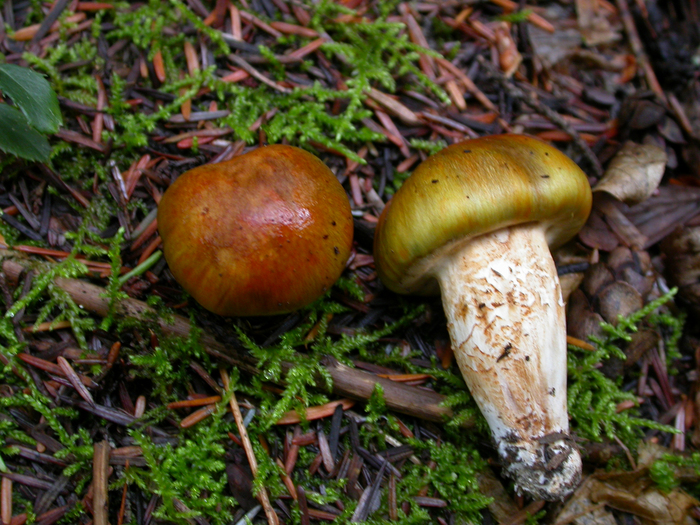
I normally do not favor the specimen
shots, but that is really the only way to try to capture the beautiful colors of Tricholoma zelleri, now known as Tricholoma focale. This mushroom is in the same genus as the much-prized Matsutake, but is entirely inedible and has a somewhat foul odor to remind you of that fact. Nonetheless, the family resemblance can be observed, with the tapering stalk and red-brown scurfy coating on the stem. It is really the colors of this mushroom that make it worth noting, though. The greens, golds, reds, and browns are even richer in real life. This photo was taken on 10-23-03.
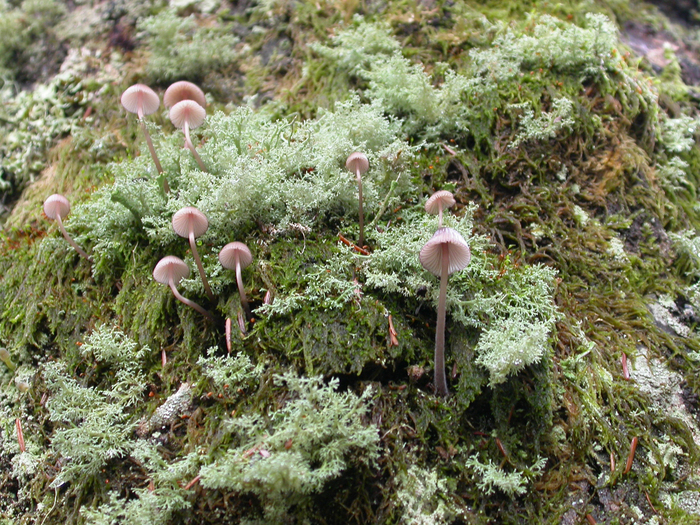
These are one of my favorite mushrooms to find, and one of the most difficult to successfully photograph. They are Cortinarius violaceus (see commentary above regarding the genus Cortinarius. They are a deep, gorgeous, royal purple through and through. The stalk is purple, the cap is purple, the gills are purple, even the mycelia are a more pallid purple. The spores are rust-brown, like all Cortinarius, but that is the only exception. The caps look exactly like purple crushed velvet, and best of all these mushrooms are edible! Unfortunately, they also taste a lot like purple crushed velvet (that is to say, rather dry and flavorless), but they are perfectly fine on pizza or any other dish that normally would hide the delicate flavor of wild mushrooms. Arora lists them as rare,
but in the areas where they do grow they tend to grow in abundance. Since they are rare I only ever pick a few, and leave the rest to spread their spores in the old growth. This photo was taken on 10-13-03.

No, that's not a spiderweb. Those are the fine fibers of the cortina, the structure that gives the genus Cortinarius its name. You can also see the characteristic rusty-brown spores in this photo. This is an up-close shot of Cortinarius violaceus, also showing the fuzziness of the cap and the brilliant purple of the gills. This photo was taken on 10-24-05.
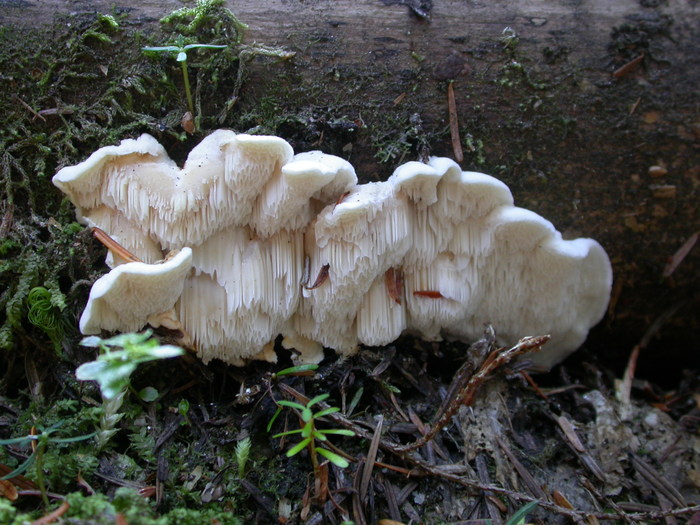
This funky little shelf fungus was growing on the underside of one of the bridges on the Denny Creek trail. I don't know what it is, but I love the long white columns formed by the pores. This photo was taken on 9-1-04.
In order to see the next set of photos, move the mouse so that the arrow on the screen moves into the blue field that says next page
. The arrow might change into a hand when you do this. Once it's inside the blue field, press the left button on the top of the mouse.
Back to Denny Creek
Back to location index